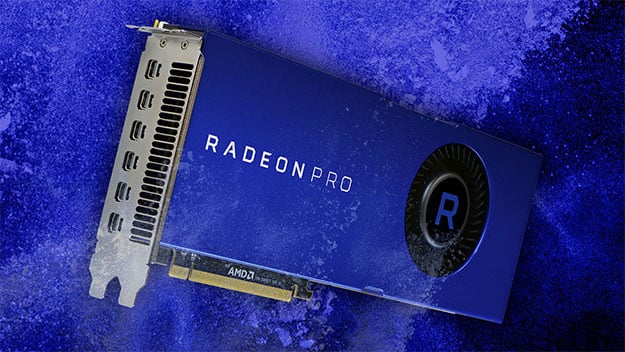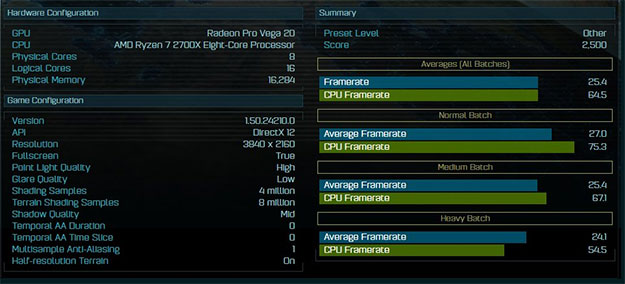AMD 7nm Radeon Pro Vega 20 Workstation Graphics Card Benchmarks Leak

There are some interesting things happening in the professional graphics hardware market. Just a few days ago, there was a slide making the rounds that depicted a Radeon Pro V340 graphics card with 32GB of HBM2 memory, and it was speculated that it has a pair of 14-nanometer Vega 10 GPUs underneath the hood. Interesting stuff, but even neater is a set of leaked benchmarks for a Radeon Pro Vega 20 card, which as the name implies sports a Vega 20 GPU built in a 7nm FinFET manufacturing process.
To be clear, this is a different beast than AMD's Radeon Instinct accelerators. Those cards are intended for servers and data centers that run deep learning and high performance computing (HPC) workloads. Earlier this month at Computex, AMD boss Dr. Lisa Su held in her hand the world's first 7nm GPU and said it was already sampling to customers in the form of Radeon Instinct, with no mention of when other market sectors could expect to a 7nm Vega chip.
That's where the leaked benchmarks come into the play. They purportedly reflect a Radeon Pro Vega 20 card that is intended for workstations. It's not clear if the upcoming Radeon Pro Vega 20 will replace AMD's Radeon Vega Frontier Edition or Radeon Pro WX series, but either way, it looks like Vega in 7nm form will soon find its way to markets that extend beyond the data center.
The above indicates a Radeon Pro Vega 20 graphics card nestled into a system with a Ryzen 7 2700X processor running Ashes of the Singularity at a 3840x2160 (4K) resolution. While not confirmed, it's expected the card will debut with up to 4,096 stream processors and 32GB of HBM2 memory, with faster clockspeeds and better efficiency than the current crop of Radeon Pro cards based on Vega 10.
As promised, here's the link to two Vega 20 benchmark results. https://t.co/cJhmabZxZY pic.twitter.com/Rv60H8gTK2
— VideoCardz.com (@VideoCardz) April 30, 2018
There are other Vega 20 benchmarks out there as well, such as this 3DMark database entry that Videocardz uncovered:
None of the scores so far are mind blowing, though bear in mind that assuming they're legitimate, they represented unreleased hardware that could see some tweaking before being released to the public. Updated drivers based on finalized hardware could also make a difference.
Outside of performance, the other question mark is whether AMD will shove 7nm Vega GPUs into gaming cards. It's only a matter of time before 7nm GPUs reach gamers, but AMD might decide to wait until Navi. Time will tell.



